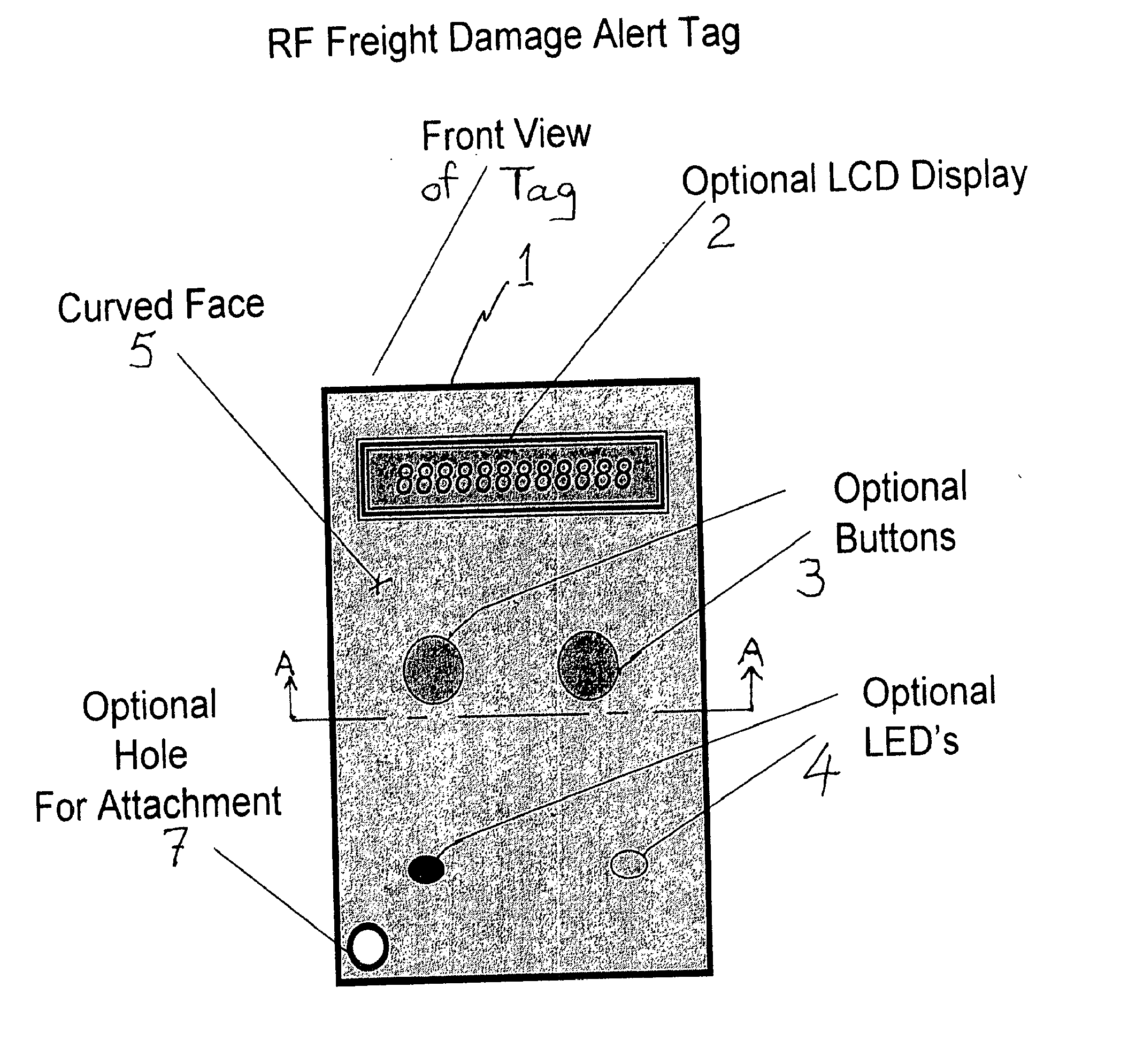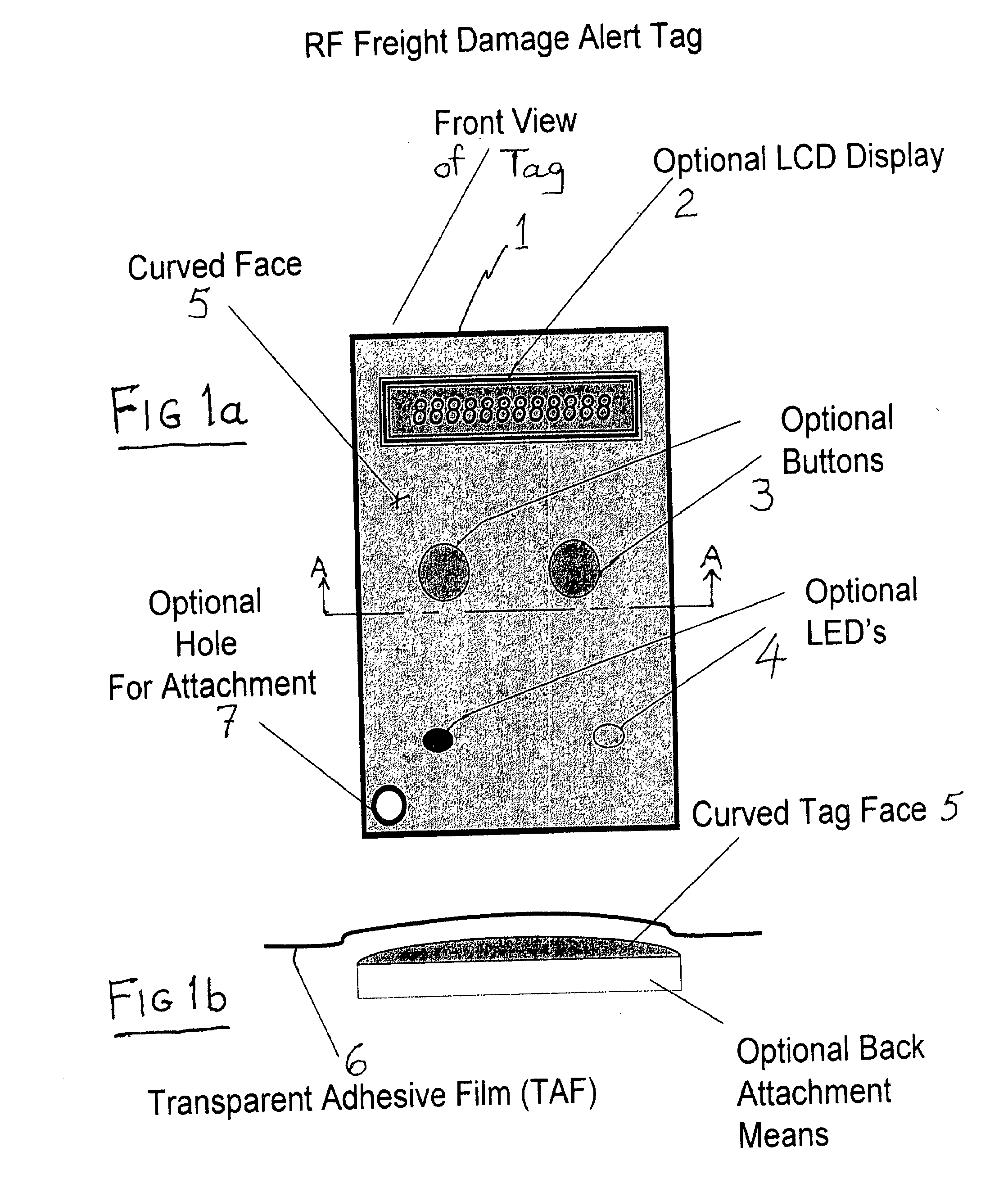Networked RF tag for tracking freight
a freight and freight technology, applied in the field of system and method for detecting and tracking packages, can solve the problems of limited range, excessive consumption of power, and high cost, and achieve the effect of reducing slippag
- Summary
- Abstract
- Description
- Claims
- Application Information
AI Technical Summary
Benefits of technology
Problems solved by technology
Method used
Image
Examples
application examples
[0074] The simplest application in use of the tag may be simply as a recording of shipping information. Many shipper's have far too low volume of packages to be shipped (three to four week inventory) to justify placing a full shipping system. The average cost for such a system, particularly if it includes a printer, may be thousands of dollars. The same customers however often refuse to fill out a paper waybill. This NRF tag system simplifies shipping for low volume shippers. In its simplest form, this can provide a very low-cost shipping system to low volume shippers, and reduce cost for the courier, and provide enhanced ability to sort, track and bill the customer.
[0075] In this example the low volume shipper would be provided a hand-held with a low-cost modem built into the cradle. The hand-held can dial out a phone line to a centrally located server, provide the server with information about shipments and also receive updates as well as a customer list. The shipper would simply...
PUM
| Property | Measurement | Unit |
|---|---|---|
| radio frequency | aaaaa | aaaaa |
| radio frequency | aaaaa | aaaaa |
| frequencies | aaaaa | aaaaa |
Abstract
Description
Claims
Application Information
 Login to View More
Login to View More - R&D
- Intellectual Property
- Life Sciences
- Materials
- Tech Scout
- Unparalleled Data Quality
- Higher Quality Content
- 60% Fewer Hallucinations
Browse by: Latest US Patents, China's latest patents, Technical Efficacy Thesaurus, Application Domain, Technology Topic, Popular Technical Reports.
© 2025 PatSnap. All rights reserved.Legal|Privacy policy|Modern Slavery Act Transparency Statement|Sitemap|About US| Contact US: help@patsnap.com



